Although a huge variety of dishes are local to specific islands of the Caribbean, you'll see certain foods and drinks throughout the region.
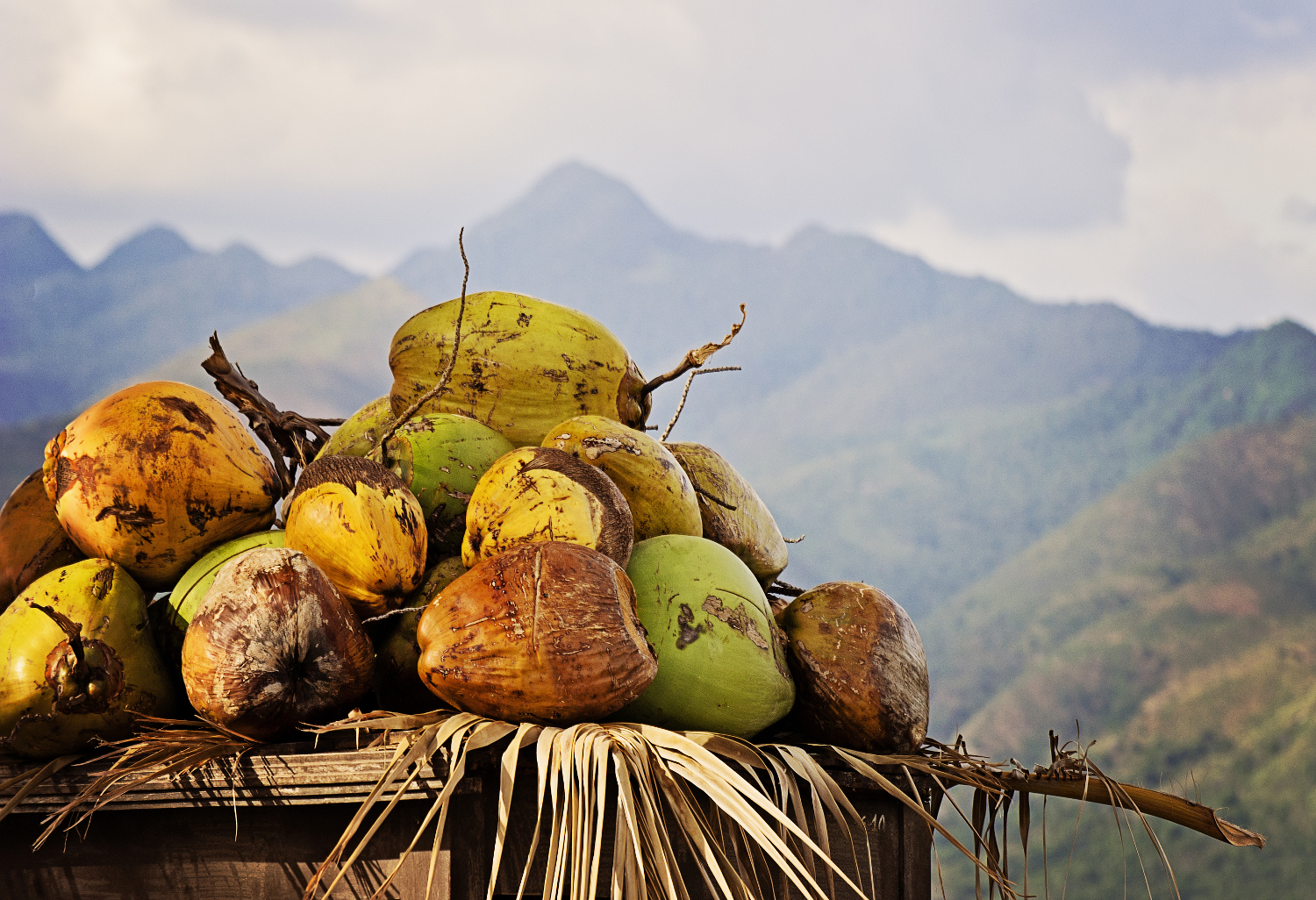
Antigua’s national dish is a hearty stew blending meat and vegetables, such as okra, spinach, eggplant, squash and potatoes. It’s often served with fungi, which aren't mushrooms but cornmeal patties or dumplings. Like so many iconic dishes the world over, Antiguans are convinced that their mom makes the very best version of pepperpot, which comes in as many variations as there are moms. The dishes roots go right back to Africa and reflect the foods and traditions that slaves brought to the Caribbean. Similar dishes, such as ‘souse’ in the Bahamas are found across the islands.
Where to find it: The Public Market, in Antigua's main city of St John's, has stalls selling excellent homemade versions of pepperpot.
Another Caribbean dish found in even more variations than there are islands, cabrito (goat) stew is a staple of Aruba, Bonaire and Curaçao, the three neighboring islands near the coast of Venezuela. Well suited to the scrubby landscapes of the region's semi-arid islands, goats have long been part of every family farm and are still found munching away on whatever's handy in many a backyard. Goat stars in many a piquant curry; other stewlike dishes include ‘mannish water’, a Cayman Islands' mixture of yams plus the head and foot of a goat and ‘goat water’, Montserrat’s national dish of spicy clove-scented broth accented with floating chunks of meat.
Where to find it: Queen's on Aruba serves a fine goat stew and local treats such as keshi yena (stuffed gouda cheese).
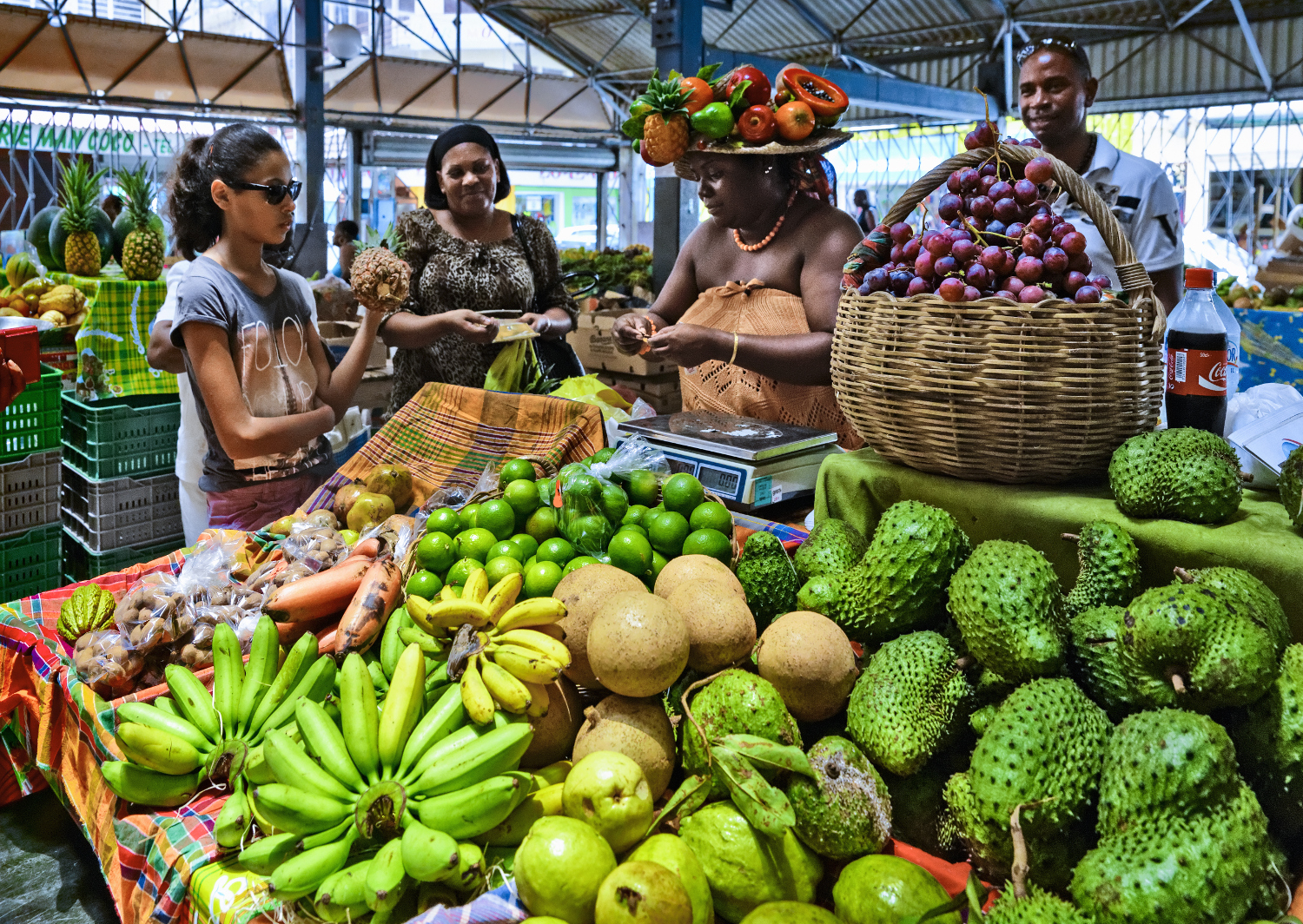
Jamaica’s most famous dish, jerk is actually a cooking method: smother food in a tongue-searing marinade, then smoke over a wood fire or grill to perfection. One of the Caribbean's few foods to reach true stardom elsewhere in the world, jerk reflects influences from Africa to Portugal to Latin America. The secret to the marinade is aromatic allspice and very hot peppers, usually the deceptively mild-looking Scotch bonnet, though depending on the cook other flavors can include garlic, thyme, cloves, cinnamon and nutmeg. Although many meats are given the jerk treatment, the ubiquitous chicken is most common as the mild meat takes on the flavor well and it's cheap.
Where to find it: Nyam ‘n’ Jam at Jamaica's Montego Bay has plenty of jerk variations amid authentic surrounds.
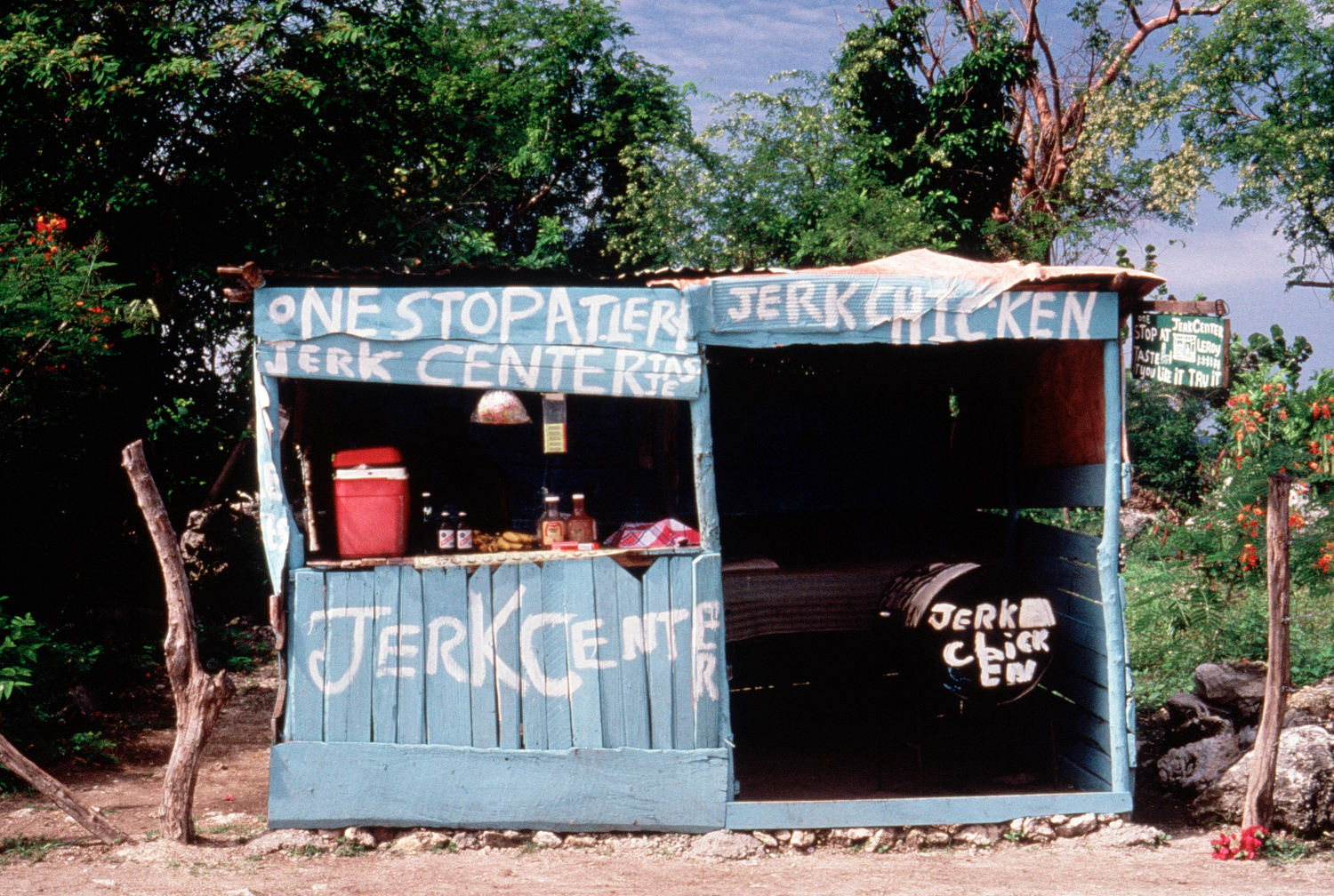
Smoky, spit-roasted suckling pig is sold at roadside trucks and stands across Puerto Rico and is a succulent taste of heaven. Pork is a major part of the national cuisines of the islands with a strong Spanish heritage, which include the Dominican Republic and Cuba. Roast pork served with rice, beans and plantains is a staple. Another porky treat on Puerto Rico is mofongo, which mixes fried plantains, garlic and pork cracklings in a scoop of savory bliss.
Where to find it: El Rancho Original is our pick among many competing lechón asado outlets in the roadside town of Guavate, south of San Juan.
Something like a huge clam, conch’s thick, chewy meat makes excellent fritters. They are a staple in the Bahamas, Bonaire, the Cayman Islands and cruise-ship ports everywhere and are sold from roadside stands across the islands (look for piles of the huge, iconic pearly pink shells). Get them fresh from the fryer and try to find farm-raised conch, which is the most sustainable. Conch also appears in salads, soups and stews; in fusion restaurants, you might even find conch ceviche.
Where to find it: Patty's Place, a simple waterside cafe on Providenciales, the main island of the Turks & Caicos, is an excellent spot for conch fritters.
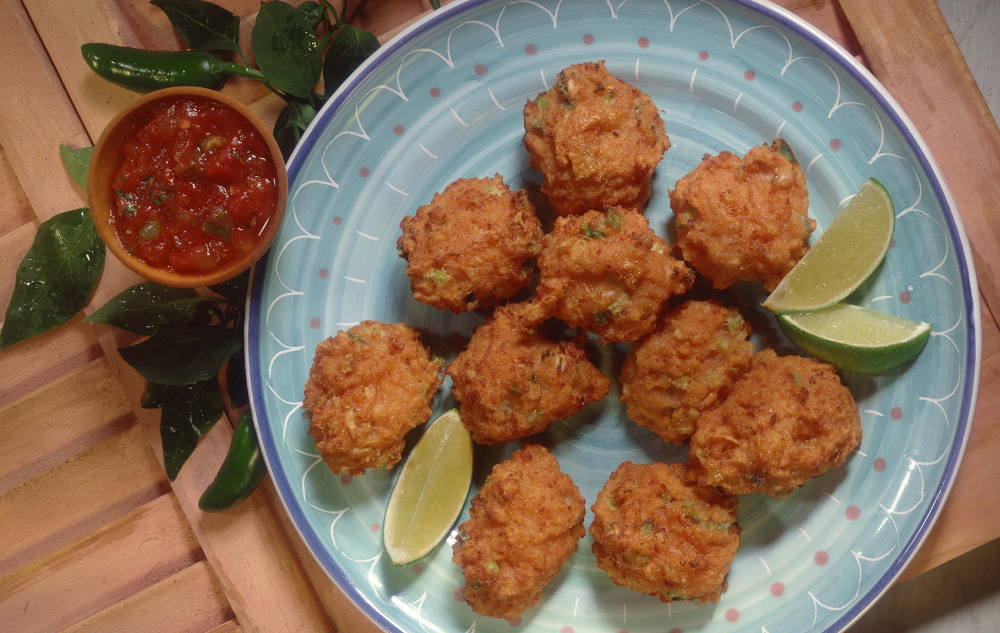
Crabs stuffed with a spicy mixture of crabmeat, garlic, shallots and parsley, this dish is popular on Guadeloupe and Martinique. Served almost everywhere on these French-flavored islands, crabes farcis is but one of many delectable dishes that show off their colonial heritage. In fact, local seafood coupled with relatively sophisticated cooking is a major part of these islands’ appeal. Also try acras, seafood fritters in a delicate tempura, and blaff, white fish marinated in lime juice, garlic and peppers and then poached.
Where to find it: Le Coin des Pêcheurs overlooking the bay at Deshaies on Guadeloupe has many great seafood dishes including crabes farcis.
The casual treat of Barbados, cutters are meat or fish sandwiches in an ultra-soft salt-bread roll that are served at stands, cafes and bars across the island. They're best enjoyed absolutely fresh and dripping with juice and a dash of hot sauce. While variations with fillings like pork and chicken cut the mustard, you can double-down on local goodness by ordering your cutter filled with moist and juicy flying fish, the ubiquitous Bajan seafood delight, with a dash of lime and garlic providing extra zing.
Where to find it: Cuz's Fish Shack is just south of Bridgetown on Barbados and is right on a sweet strip of white-sand beach.
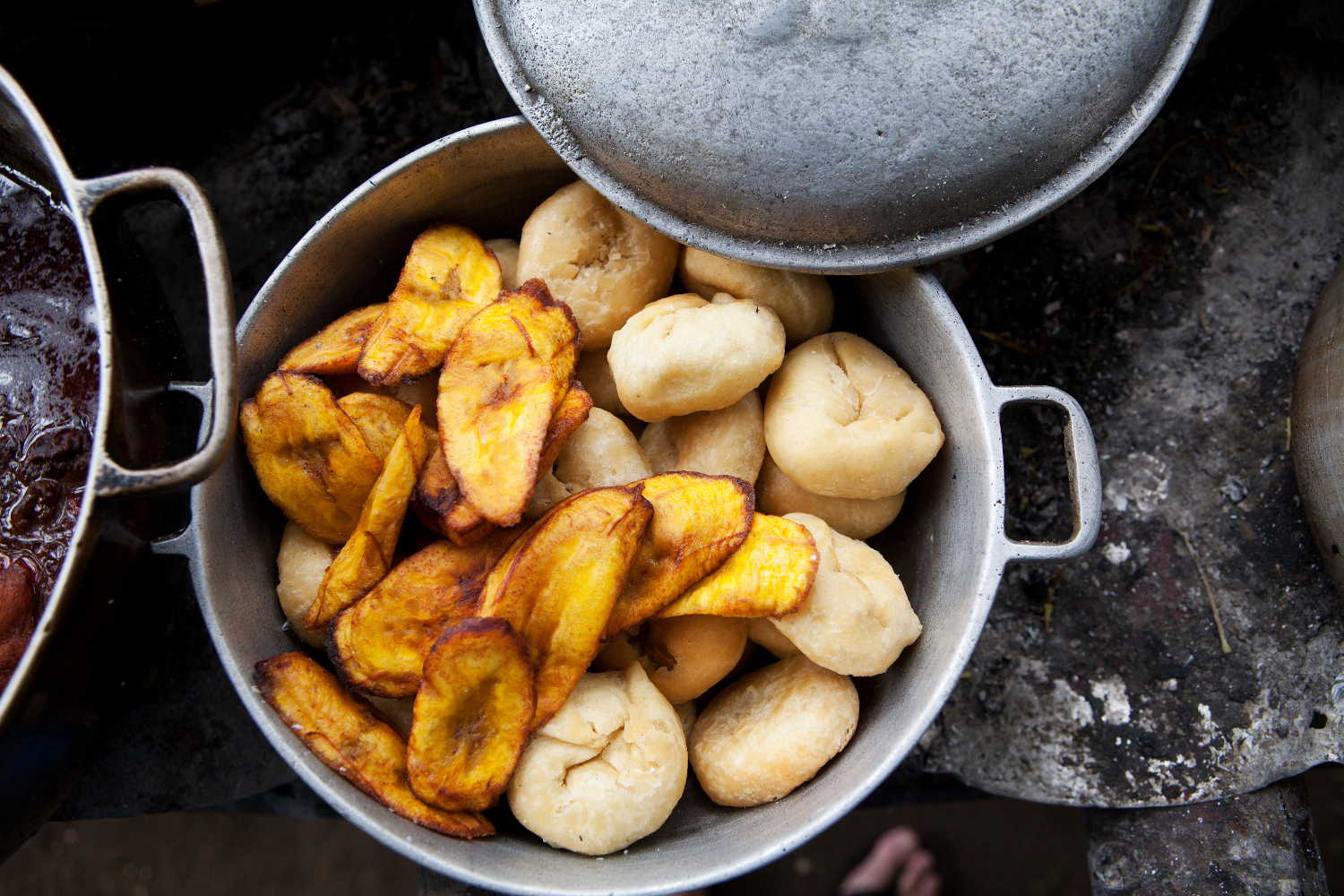
Carnival and harvest festivals are celebrated with abandon at different times of the year on different islands. Besides street parties, soul-thumping music, dancing, costumes and more these normal-life-stopping spectacles feature fabulous local foods sold from stands anywhere there's a party. Five good places to join the fun and feast include:
Carnival, Trinidad The Caribbean’s biggest street party features a huge amount of excellent local food.
When: February
Carnival, Jamaica Carnival in Kingston brings people into the streets for music and food.
When: Held at Easter in March or April.
Simadan, Bonaire This harvest festival is held in the small town of Rincon, the historic home of the slaves who were brought to the island to make salt and harvest food.
When: Early April.
Crop-Over Festival, Barbados This big festival marks the end of the sugarcane harvest and features island music and plenty of foods made with locally iconic flying fish.
When: Held over three weeks, beginning in mid-July.
Carnival, Grenada One of the Caribbean's most verdant islands, Grenada has its carnival later than most but makes up for it with showy celebrations and foods, many flavored with the much-prized local nutmeg.
When: August